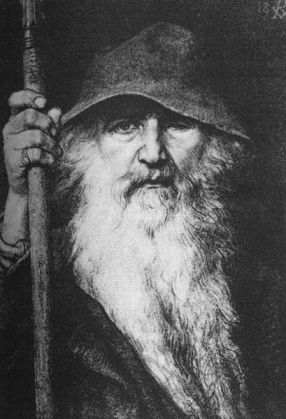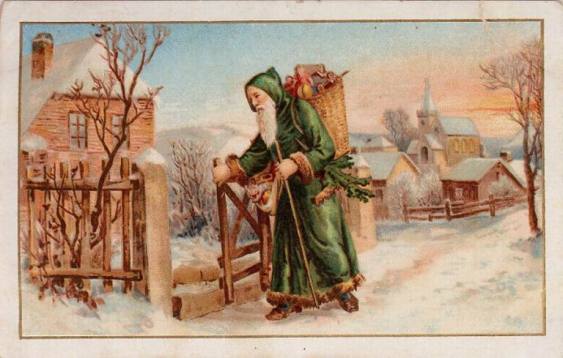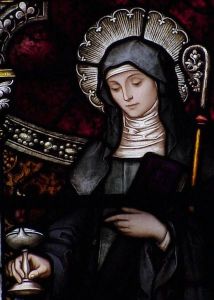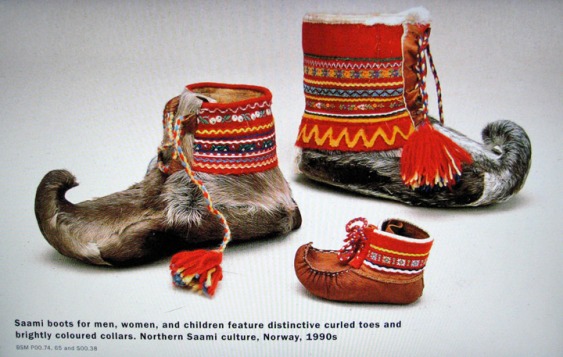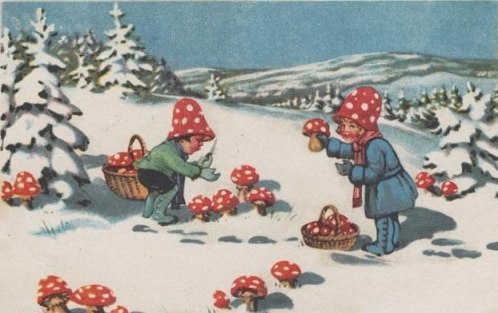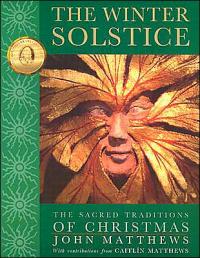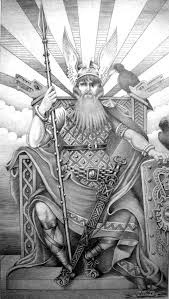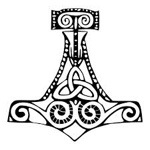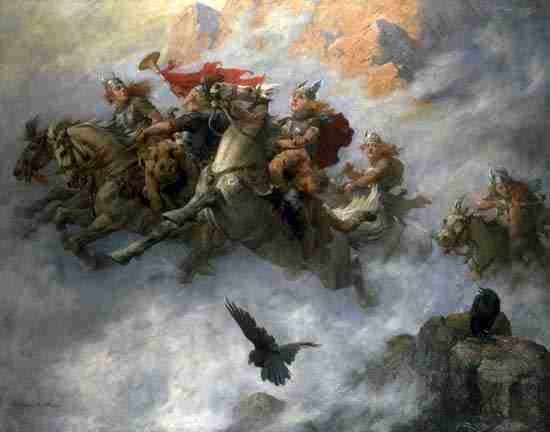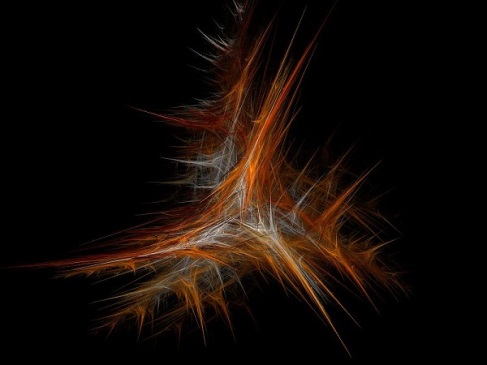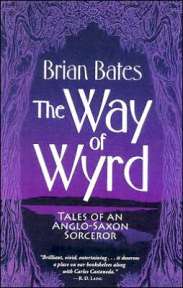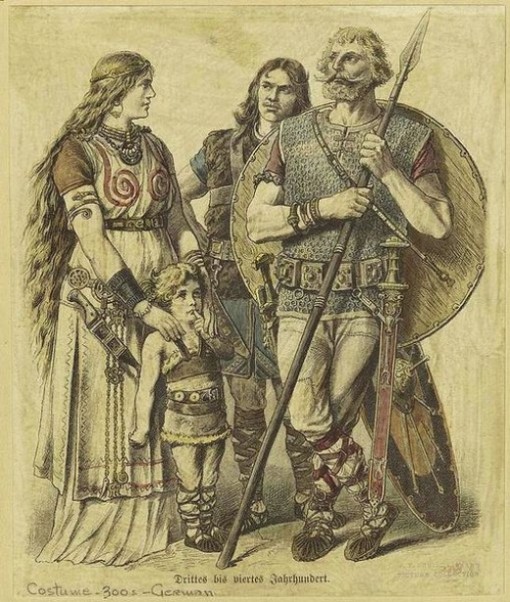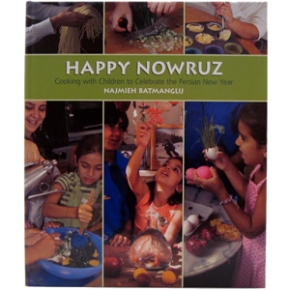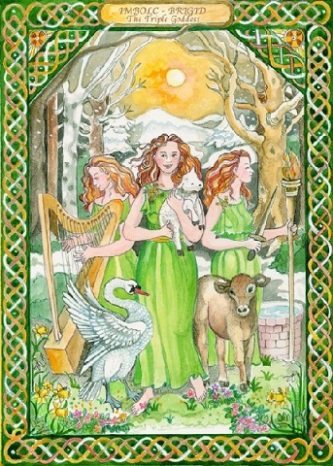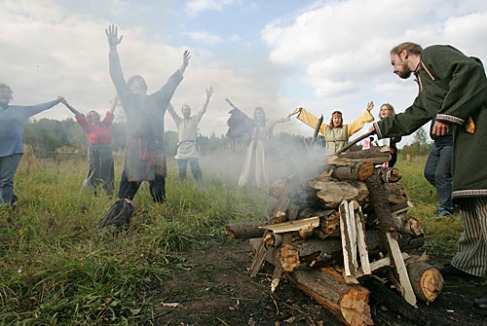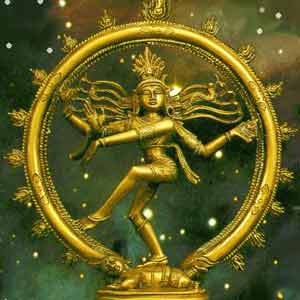this post is by Aelfwynne
Cultural Appropriation is defined by Wikipedia as follows:
Cultural appropriation is the adoption of some specific elements of one culture by a different cultural group. It describes acculturation or assimilation, but can imply a negative view towards acculturation from a minority culture by a dominant culture.It can include the introduction of forms of dress or personal adornment, music and art, religion, language, or social behavior. These elements, once removed from their indigenous cultural contexts, can take on meanings that are significantly divergent from, or merely less nuanced than, those they originally held.
This has been in the news a lot lately in both pagan and mainstream media. Groups ranging from fashion designers to practicing pagans have been scolded for handpicking bits and pieces from other cultures to use for things from aesthetics in fashion to neo-pagan ceremony.
(See this article from Jezebel)
In the US, this typically happens between the dominant culture and Native American culture. Native Americans then speak up and say “HEY! Give us our stuff back!” And more power to them. They have every right to do so. After having their culture nearly wiped out, I praise their efforts to safeguard their traditions and preserve their original meaning within their cultural context.
Most people aren’t fully versed in the history of the conversion of Northern Europe to Christianity. I delineate Northern from Southern because Southern Europe, being integrated into the Roman Empire and with more frequent interaction with the Middle Eastern and North African countries on the other side of the Mediterranean, has a completely different history and relationship with Christianity than does Northern Europe. My personal delineation between Northern and Southern Europe draws the line between Romance speaking and non-Romance speaking countries in the West, so I include countries often considered “Central Europe” in my definition, as well as the United Kingdom and Ireland. Granted England was under Roman rule, but for a much shorter time comparatively, and the pagan Germanic tribes took over after Rome left. So they have more in common with Scandinavia and continental Germans for our purposes here.
I can’t spare the space to give you a run down on the conversion process, but stay tuned for future blogs on that. If you aren’t well versed in it, please Google the following: The Northern Crusades, Charlemagne and Widukind or Charlemagne and the Saxons, and the Wendish Crusade. That’ll be enough to whet your whistle.
To get back to the point, much of the conversion of Northern Europe happened with armies and much bloodshed. In some cases, it led to the virtual genocide of entire ethnic groups (Google the Teutonic Knights and Prussian genocide). When these people were conquered, they were forced to give up their ancestral ways. From religion, to festivals, and folk traditions. They were oppressed by the new dominant culture; Christianity and the new systems of social control and governance. When caught practicing their ancestral ways, the penalties could be severe. Many victims of the witch hunts were, in fact, people caught practicing their traditional folk practices which were now outlawed.
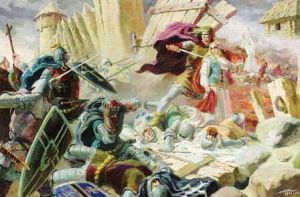
Destruction of the Baltic Pagan Temples During the Northern Crusades
Fast forward to today, and we find the descendants of these people making great strides in reviving their ancestral ways. Through scholarly research and archaeology we’re piecing together the puzzle of what our own indigenous faith looked like. Personally, I think this has great potential beyond the realm of our own self identity. For the first time in recent history, so called “white people” are connecting to a tribal past. By understanding our own indigenous roots, and that we too were victims of oppression and assimilation, we can better understand issues faced by indigenous people who have gone through this more recently, or are experiencing it now.
Incidentally, there are, in fact, still indigenous groups of Caucasian people today living very close to their ancient tribal ways and facing persecution of the same kind that other indigenous people around the world are facing. But we’ll explore that in another post.
Now what does all this have to do with cultural appropriation?
Well, by now, pretty much everyone is fully aware that holidays like Christmas and Easter were originally pagan and commandeered/re-purposed by Christians. This was clear cut cultural appropriation the first time around, but it was so many hundreds of years ago that most of us don’t consider it that way. However, in the case of Easter, it seems to be happening all over again.
Again, I don’t have the time and space to give you a run down on the historical evidence for the Anglo-Saxon goddess Eostre. But before you jump in with the nauseatingly cliche comments like “there is little evidence for her,” please take a look at the rundown of the available evidence in our Facebook post, which I hope to expand and blog at some point.
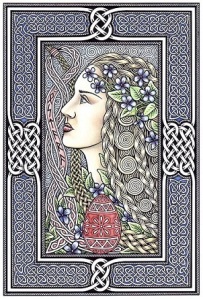
The Goddess Eostre by by Jan Fibinger
So, we have established that there IS evidence for Eostre, and that she is the namesake of the Spring festival we know as Easter. Yet, there has been a recent movement to associate Easter with the Babylonian goddess Ishtar.
Ishtar is a goddess completely removed from the the linguistic and geographic region where Eostre reigned. Ishtar is related to Astarte and Inanna, all found in the Middle East area.
For those who don’t know much about mythology, let me explain something. There are people who attempt to force connections where there are none. This goes back to the Romans who forced connections between their own gods and the gods of the North. These connections are often tenuous at best and completely erroneous at worst. In the old pagan world, mythologies were heavily influenced by geography, climate, society, and culture. So a society in a desert climate for example will have very different mythologies than people in a fertile green area. Defined seasons with harsh winters will develop different mythologies than temperate climes where seasons aren’t as extreme. Agrarian farming societies will place higher emphasis on fertility and Earth mother goddesses, and in hunting/nomadic societies masculine sky gods will dominate. So for cultures who are removed from each other both geographically and linguistically, it doesn’t make sense to force connections between their gods.
I could go into a breakdown of Ishtar/Astarte/Inanna and why she is very different from Eostre/Ostara, but by all means, please look at each for yourself if you don’t take my word for it. They each have very well cited Wikipedia entries. Ishtar’s entry connects her to the goddesses I’ve mentioned, but make NO connection between her and Easter. Conversely, both entries for Eostre and Easter mention the connection to the other.
Yeah, it’s Wikipedia, I know. Again, see my post on the historical evidence on Eostre for more links.
But back to cultural appropriation. The idea that we are a cultural minority may come off as laughable to some. Sure, we’re part of the Caucasian majority who has gone around oppressing all the other minorities in the world, right? Well, not so fast. We are a religious minority. And we are a people making a legitimate attempt to reclaim and revive the part of our culture that was oppressed by an invading dominating foreign culture. And as such, it is important to recognize our holidays and the deities represented by them.
Now, Ishtar probably did have a fertility festival. I am in no way denying that. But it wasn’t called Easter. If you think this is a petty splitting of hairs, then consider this. Would you approach a Hindu and say, “well I like that holiday of yours, but I prefer St. Peter as my patron. So I’m going to use your holiday but insert my patron saint and parade around telling people the holiday is in honor of him.” That would be terribly rude and offensive. Similarly, would you approach a Hindu and say, “oh Ganesh is so cool! Well I’m going to make him the center of my Christmas celebration.” The Hindu person would probably find that offensive as well and would explain that Ganesh has nothing to do with Christmas.
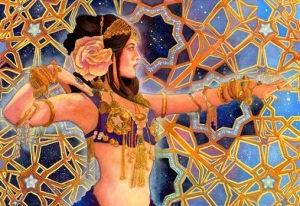
The Goddess Inanna related to Ishtar, by pearlwhitecrow.deviantart.com
So why is it acceptable, when European pagans are only now reclaiming their indigenous religions, to pluck the patron deity of a particular holiday out and insert an unrelated foreign deity from a completely different culture, in a completely different part of the world?
It’s NOT ok. Eostre has been buried for centuries. People today are still denying that she was ever worshiped. Thankfully new research is coming to light showing that she, in fact, did have a wide following through continental German speaking areas over to England. When we are finally reclaiming this goddess it is offensive to our culture to disregard her.
And, hello? It’s offensive to the culture Ishtar came from to take her out of her own cultural context and insert her into a foreign one! So please, pagans, wise up! Do your research. Stop spreading false information.
I must also assert that what’s good for the geese is good for the gander. If stealing, perverting, and twisting other people’s cultures is offensive and wrong, well I’m here to say that I’m of Germanic and Anglo-Saxon descent, I practice a form of paganism that honors my ancestral heritage, and just as anyone else would be, I’m offended when the goddess that we only recently “resurrected” from the depths of hidden history is pushed out again. And just like anyone else in this world, I am within my rights to want to protect the integrity of my ancestral culture.
** Please see the FOLLOW UP to this post **
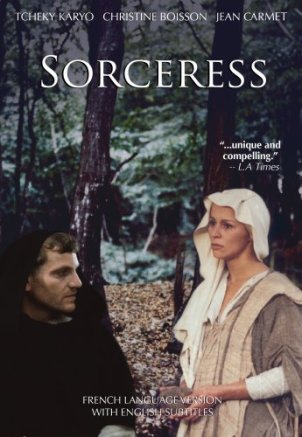 This subtitled French film is about a “forest woman” in a remote rural medieval village. She uses her knowledge of plants to act as a healer. Villagers come to her for her knowledge of herbs to heal sickness. She also has some “tricks” up her sleeve in terms of cures that are more for placebo affect. So of course, when the Catholic Church sends a new priest to the village, he accuses her of witchcraft.
This subtitled French film is about a “forest woman” in a remote rural medieval village. She uses her knowledge of plants to act as a healer. Villagers come to her for her knowledge of herbs to heal sickness. She also has some “tricks” up her sleeve in terms of cures that are more for placebo affect. So of course, when the Catholic Church sends a new priest to the village, he accuses her of witchcraft.